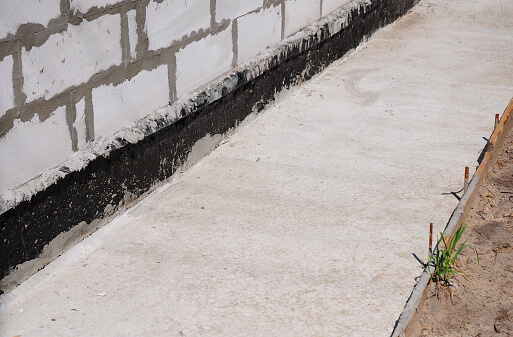
What Is a House Waterproofing Membrane?
Keeping your foundation dry is one of the most important things that you can do for your house. Too much water or moisture can disrupt the foundation and the soil beneath it, causing structural damage to your home. Even if the damage doesn’t go to that extreme, too much water can lead to mold, mildew, and flooding.
The job of a waterproofing membrane is to keep that from happening.
Your Concrete Isn’t Waterproof
Most foundations are made with either poured concrete or concrete blocks. These are a strong, durable material that can seem impermeable, but concrete is actually very porous. Even when it’s completely whole without any cracks, water vapor can still permeate through the pores to condense on the inside of the wall.
And if you have cracks in your concrete foundation? That only makes it easier for the water, since liquid water can then get in your foundation. Cracks are very common as the ground shifts or the load on the foundation changes, especially in areas that have wide temperature changes throughout the year.
The Membrane Fills in the Gaps
Filling in cracks in concrete is a temporary solution at best. To be effective, the cracks need to be filled from the exterior, which is a costly process that you’ll just have to repeat again if the another crack forms. Even then, it still doesn’t solve the problem of porous concrete.
That’s why membranes were invented. These are applied to the exterior of the concrete foundation. The material of the membrane forms a waterproof seal that even water vapor can’t penetrate. Any cracks are filled in, and the pores of the concrete are covered to keep the water out.
How the Membrane is Installed
The best time to install a waterproof membrane is during new construction, but it can also be installed long after construction is completed. That’s because the installation doesn’t actually disrupt the foundation.
The process is simple:
- A hole or trench is excavated next to the foundation all the way down to the base level.
- The exterior of the foundation is cleaned and repaired as needed.
- The membrane is applied to the outside of the foundation. Sometimes it’s a physical membrane, but more often it’s a liquid membrane that’s painted or rolled on. Once the liquid cures, it forms a seamless barrier
- Any additional systems, such as drainage systems, are installed.
- All of the excavations are filled in, waterproofing your foundation without changing the appearance.